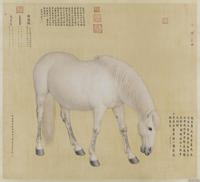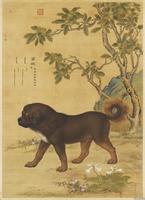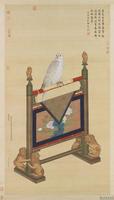Introduction
After arriving in China, Lang Shining carefully studied the painting skills of Chinese painting. The Chinese paintings he painted have solid realism, smooth and authentic ink lines, meticulous layers of smudges, and the use of colors that cannot be imitated. The combination of Chinese and Western styles is completely new. Speaking of Lang Shining's influence on traditional Chinese painting, perhaps it is more about letting Chinese people see some techniques of Western painting.
As a Western painter, Lang Shining won the emperor's appreciation and trust with his original new painting style entirely through his own efforts. Judging from the existing handwriting of Lang Shining, it has both the artistic generalization of European oil painting that faithfully reflects reality and the taste of traditional Chinese painting. It does have a high artistic appeal. In 1724, which was painted for Yongzheng's birthday, "Poultry Presenting Yingzhi", Lang Shining fully demonstrated his western painting skills. The shape of this picture is accurate and fine, and the sketches and light and shade effects make the objects in the picture have a strong concave-convex three-dimensional effect. The curved and circling pine branches and leaves are hidden, the bark is mottled, and the white eagle standing upright in the center is extremely prominent.
Chinese painting does not only regard landscapes, animals, and plants as things that exist in nature but endows the painted objects with a certain metaphor. I believe his painting, even for viewers nowadays to engage with, can still transmit its own quietness but energetic feelings to the viewers. The pine trees, eagles, rocks, and flowing water depicted in the picture symbolize strength, longevity, and auspiciousness in Chinese culture. In terms of color, eagle white, pine green, grape purple, and vine pollen purple are also distinct, gorgeous, and dense from the traditional Chinese Lang Shining style.
Click below and check the fabulous Castiglione's paintings
-

Hundred Horses
-

Ten Horses Depiction, Thunderclap
-

Ten Dogs Depiction, Gray Brownie
-

White Eagle (indoor)